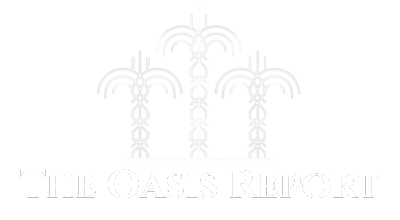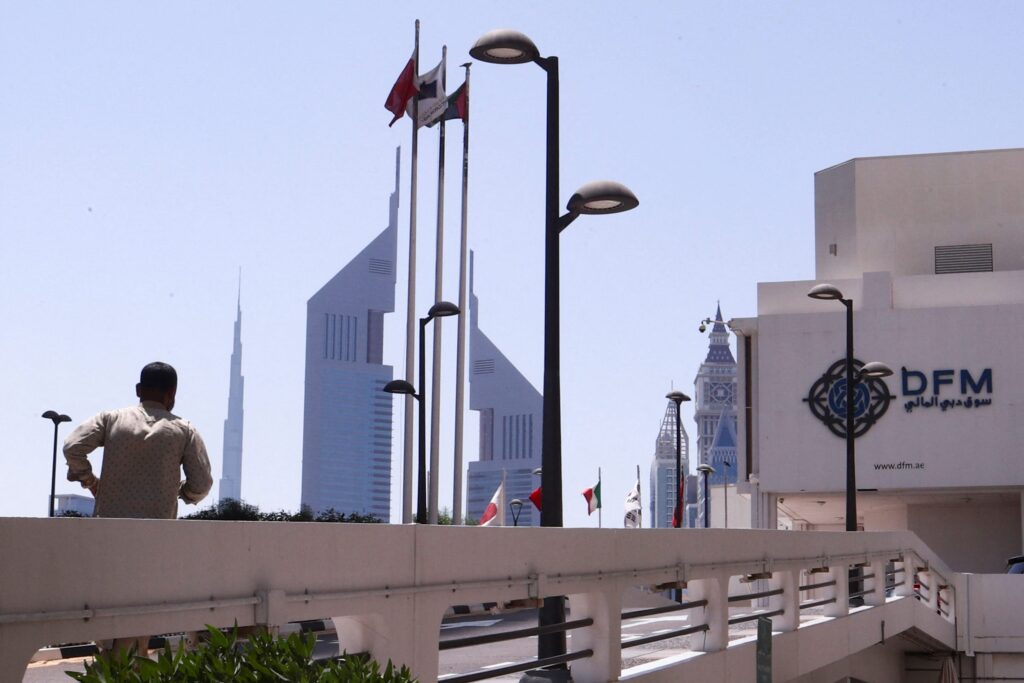Abu Dhabi below 2022 peak
Saudi still down 6% in 2025
Dubai’s stock index hit fresh 17-year highs this week, as first-quarter earnings rose and a buoyant non-oil economy convinced investors to favour UAE stocks over the much larger Saudi market.
Gulf markets, like bourses worldwide, tumbled in early April after President Donald Trump imposed sweeping tariffs on imports to the US.
In contrast to the main Saudi index, which has not recovered all its losses since Trump’s April 2 tariff announcement, UAE indexes have rebounded beyond their April start, and extended a rally that began in the early stages of the Covid-19 pandemic.
Even within the UAE federation, though, stock performance between Dubai and Abu Dhabi has diverged, at least in the longer term.
The main Abu Dhabi index has remained fairly flat in the last three years, while the Dubai Financial Market General Index has risen steadily since April 2020.
“Investors are targeting blue-chip companies with solid fundamentals – this isn’t a speculative rally,” said Marwan Shurrab, chief commercial officer at Dubai-based online trading platform xCube.
Dubai’s top performing stocks span several sectors, underlining the rally’s breadth. These include real estate bellwether Emaar Properties, low-cost carrier Air Arabia, telecommunications operator du, and Dubai’s biggest bank by assets, Emirates NBD.
Dubai’s index has gained 13 percent since slipping to a five-month low on April 7, although it declined slightly on Wednesday as some investors booked profits. The measure is up nearly 6 percent this year and has tripled this decade.
Saudi Arabia’s benchmark has rallied only 3 percent since the early April sell-off and is still down 6 percent in 2025.
Abu Dhabi, meanwhile, has gained 8 percent from April 7’s 10-month low, up 7 percent this year. But, longer term, the stock market in the UAE capital has been in the doldrums since hitting an all-time high in late 2022 and is still 9 percent below that peak.
Trump’s tariffs will do little direct harm to the Gulf, which runs a trade deficit with the US and whose main exports are hydrocarbons. These are exempt from US tariffs.
Nonetheless, the tariffs have weighed on global economic growth forecasts and, in turn, on oil prices.
Expectations of lower oil revenues for Gulf exporters have spurred regional equity investors to rotate money into UAE stocks and out of companies listed on the Saudi Exchange, says Ahmed Kamal from Azimut Middle East, an asset manager in Dubai.
“That’s helping drive the renewed UAE market rally,” he said.
The UAE, and Dubai in particular, has a much more diversified economy than that of Saudi Arabia, as well as a lower budget breakeven oil price, so it will be less affected by lower-for-longer crude prices, Kamal said.
This trend has also coincided with a bumper first-quarter earnings season in the UAE, with real estate developers and banks among the companies to report above-forecast profits, Kamal said.
Stellar quarterly profits are leading analysts to raise their full-year earnings forecasts and fair value price targets for many UAE companies.
“That’s likely to trigger further stock price gains – not necessarily with the same momentum as we’ve seen over the past few weeks, but there’s substantial upside remaining as we still see a gap between companies’ earnings guidance and market consensus,” Kamal said.
The dollar’s sustained slump versus other major currencies, including against the euro and British pound, has also lowered the relative cost of UAE stocks for investors from non-dollar-pegged countries.
That is detrimental to investors who held such stocks prior to the dollar decline but should now help attract new investors from the likes of the eurozone and UK, Kamal said.
“The dollar drop means that, even with the recent share price gains, there’s still a good entry point for these investors and good value to be found,” he said.
Investors have also been targeting road toll operator Salik and Dubai Electricity and Water Co. (Dewa) ahead of their inclusion in the MSCI Emerging Markets Index on May 30.
“All these factors are contributing to the bullish market sentiment,” said Shurrab.
“Turnover has been strong across many stocks. The rally isn’t concentrated in just a couple. Participation by local and regional retail and institutional investors has been extremely healthy.”



